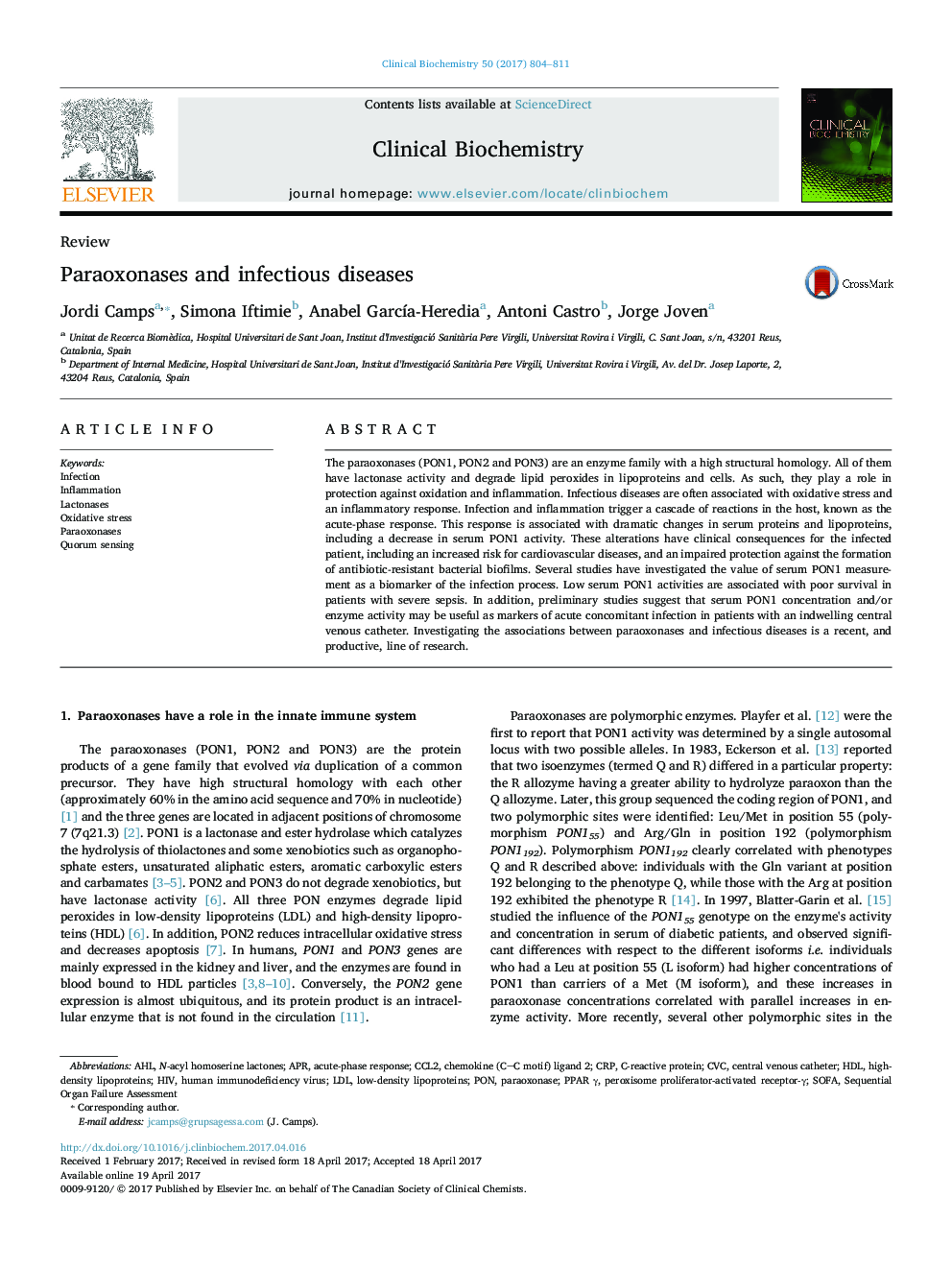| کد مقاله | کد نشریه | سال انتشار | مقاله انگلیسی | نسخه تمام متن |
|---|---|---|---|---|
| 5510196 | 1538854 | 2017 | 8 صفحه PDF | دانلود رایگان |
- The paraoxonases are antioxidant enzymes that degrade lipid peroxides.
- Infectious diseases are associated with oxidative stress and inflammation.
- Serum paraoxonase activity is often decreased in infectious diseases.
- The implication of paraoxonase alterations in infection is an active line of research.
The paraoxonases (PON1, PON2 and PON3) are an enzyme family with a high structural homology. All of them have lactonase activity and degrade lipid peroxides in lipoproteins and cells. As such, they play a role in protection against oxidation and inflammation. Infectious diseases are often associated with oxidative stress and an inflammatory response. Infection and inflammation trigger a cascade of reactions in the host, known as the acute-phase response. This response is associated with dramatic changes in serum proteins and lipoproteins, including a decrease in serum PON1 activity. These alterations have clinical consequences for the infected patient, including an increased risk for cardiovascular diseases, and an impaired protection against the formation of antibiotic-resistant bacterial biofilms. Several studies have investigated the value of serum PON1 measurement as a biomarker of the infection process. Low serum PON1 activities are associated with poor survival in patients with severe sepsis. In addition, preliminary studies suggest that serum PON1 concentration and/or enzyme activity may be useful as markers of acute concomitant infection in patients with an indwelling central venous catheter. Investigating the associations between paraoxonases and infectious diseases is a recent, and productive, line of research.
43
Journal: Clinical Biochemistry - Volume 50, Issues 13â14, September 2017, Pages 804-811
